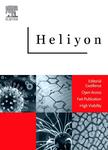版权所有:内蒙古大学图书馆 技术提供:维普资讯• 智图
内蒙古自治区呼和浩特市赛罕区大学西街235号 邮编: 010021

作者机构:School of Mathematics Statistics and Computer Science University of KwaZulu-Natal King Edward Avenue Pietermaritzburg Campus KwaZulu-Natal Pietermaritzburg 3201 South Africa Unit for Data Science and Computing North-West University 11 Hoffman Street North-West Potchefstroom 2520 South Africa
出 版 物:《Heliyon》 (Heliyon)
年 卷 期:2025年第11卷第2期
页 面:e41953页
基 金:National Research Foundation NRF (PSTD230503101493)
主 题:Automatic clustering Cluster validity index Clustering Metaheuristic algorithms Optimization algorithms
摘 要:The Cluster Validity Index is an integral part of clustering algorithms. It evaluates inter-cluster separation and intra-cluster cohesion of candidate clusters to determine the quality of potential solutions. Several cluster validity indices have been suggested for both classical clustering algorithms and automatic metaheuristic-based clustering algorithms. Different cluster validity indices exhibit different characteristics based on the mathematical models they employ in determining the values for the various cluster attributes. Metaheuristic-based automatic clustering algorithms use cluster validity index as a fitness function in its optimization procedure to evaluate the candidate cluster solution s quality. A systematic review of the cluster validity indices used as fitness functions in metaheuristic-based automatic clustering algorithms is presented in this study. Identifying, reporting, and analysing various cluster validity indices is important in classifying the best CVIs for optimum performance of a metaheuristic-based automatic clustering algorithm. This review also includes an experimental study on the performance of some common cluster validity indices on some synthetic datasets with varied characteristics as well as real-life datasets using the SOSK-means automatic clustering algorithm. This review aims to assist researchers in identifying and selecting the most suitable cluster validity indices (CVIs) for their specific application areas. © 2025 The Authors